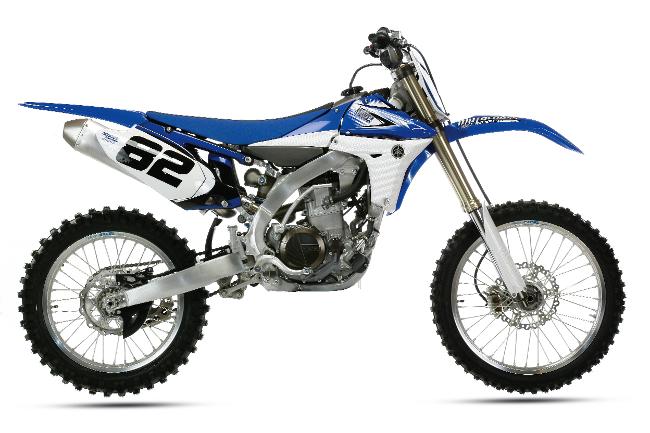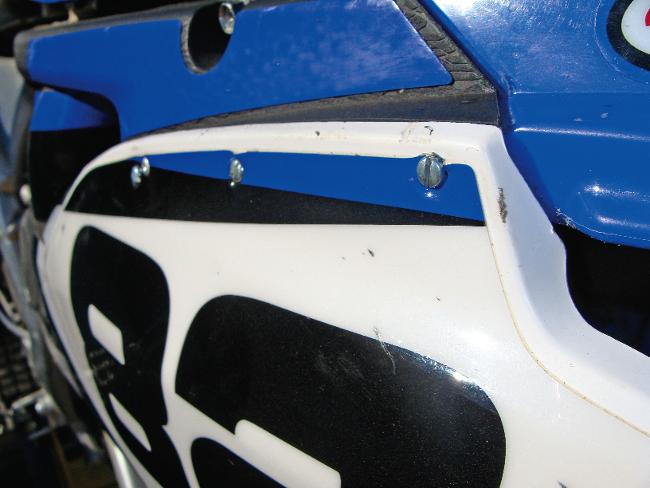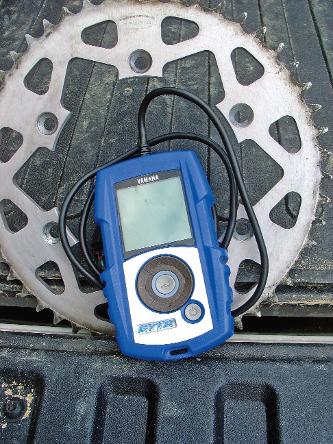MXA PERFORMANCE GUIDE TO THE 2011 YAMAHA YZ450F

The MXA wrecking isn’t totally bummed out when a manufacturer doesn’t make any changes to his new model release. As much as we like totally new bikes, we aren’t big fans of totally new problems. A bike that stays the same is a known quantity. The factory may not have made any changes, but the MXA wrecking crew can easily fall back on its play book from the year before and bring the bike up to snuff. Even better, we are a year smarter. And so it is with the 2011 Yamaha YZ450F. For the uninformed, the 2011 Yamaha YZ450F is the 2010 Yamaha YZ450F (with white radiator wings).

MXA‘s performance guide gives you all the information you’ll ever need for living and loving the YZ450F?and best of all, all the tips work on both the 2010 and 2011 Yamaha YZ450Fs. It’s a twofer.

Triple clamps. The 2010-2011 YZ450F wiggles at turn-in. It is a minor quibble, but very noticeable. We tried to iron it out with fork height and triple clamp offset changes. Although we had decent luck with 20mm offset clamps, the gain was marginal for the cost. In the end, we returned to the stock 22mm clamps and used the longer shock linkage to refine the geometry.

Side panels. At first glance, you may not notice that the side panels on the YZ450F are constructed from two separate pieces. The two parts are thermo-welded together with the plastic equivalent of pop rivets. Unfortunately, the plastic rivets aren’t strong enough. A crash, hooked boot or strong wind can cause the number plate portion to come adrift. At first, MXA replaced the broken number plates with new panels. This got expensive. Eventually, we learned that we could drill new holes and use metal pop rivets (or small bolts and nuts) to put the two pieces back together again.

Exhaust pipe. As a rule of thumb, every fuel-injected bike thrives on aftermarket exhaust systems. Why? Because most EFI bikes run flatter on top than their carbureted brethren. We tested FMF, Yoshimura, Pro Circuit, GYTR, DR.D, Vance & Hines, FMF and Akrapovic systems on the YZ450F and felt that every one of them increased over-rev while taming the barky throttle response off idle. Most MXA test riders were split between the more powerful Yoshimura and smoother Akrapovic exhausts.
|
 Radiator lowering kit. This simple $49.95 kit lowers the radiators 24mm over the 2009 radiators and 17mm over the stock 2010 or 2011 radiators. Every test rider could feel an improvement (albeit modest) to the overall feel of the YZ450F in the corners. For more information, go to www.dubachracing.com |

Shock linkage. The YZ450F is a bike with a strange mix of handling sensations?some of them caused by the stinkbug stance. Our fix was to install a longer Pro Circuit link arm. No surprise here; MXA uses this trick on the CRF450 and KX450F also. The new link lowers the rear end, which allows a wider range of setup options in terms of fork height, race sag and suspension settings. For more information, go to www.procircuit.com.
 Air filter. The airbox on the 2010-2011 Yamaha YZ450F should be in the Engineering Hall of Shame. It takes a safecracker to get to it, and once you have opened the vault, the stock filter isn’t much to look at. MXA’s solution was to install a $250 Twin Air Power Flow kit. It isn’t just a new air filter, but a totally new airbox, intake tract and filter system. It isn’t any easier to get to, but it has twice the surface area of the stocker and makes a noticeable improvement in throttle response. For more info, go to www.twinair.com or call (800) 749-2890.
|
 Front brake. Yamaha’s front brake is adequate, but it could be a lot more powerful. We traded the stock 240mm front rotor for a 270mm Galfer Wave brake rotor kit. The oversized rotor provided progressive stopping power. The complete kit (with pads) retails for $360. For information, go to www.galfer.com.
|
 Gearing. Every MXA test rider complained that the bike would fall off the pipe on the second-to-third shift in heavy loam, sand or going up hills. The fix? Gear it down. We ran either 13/49 or 13/50 to help give the bike more oomph out of the corners. Don’t be afraid to add two teeth to the rear?it worked for some test riders. The stock rear sprocket is a 48. |
 Reprogram. We love Yamaha’s GYTR Power Tuner. It doesn’t produce more horsepower, but it allows the rider to advance and retard the ignition to produce different styles of power. Additionally, it can change the amount of fuel delivered by plus or minus 21 percent. As a rule, we used the Power Tuner to tame the bark off idle by adding +4 fuel at 1/8th throttle setting and +2 fuel at 3/8th throttle setting (below 4000 rpm), while retarding the ignition -3 at 1/8th and -1 at 3/8th (below 4000 rpm).
|





Comments are closed.